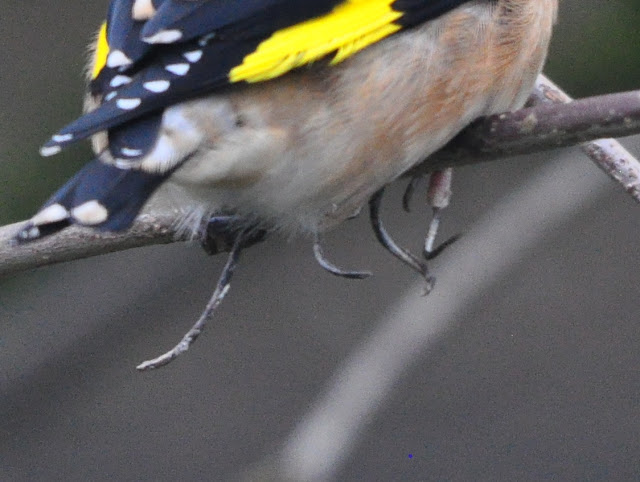I eventually managed to get some photos of it face on and apart from its feet it appears to be in good condition.
As for the pigeon porn, it was, as you may have guessed, just a pair of Woodpigeons mating. It is quite early for them to be breeding but then a pair of Woodpigeons usually manages to rear an early brood near the garden. I have seen recently fledged young in early to mid April in previous years and allowing for a nestling period of about 33 days and and incubation period of 17 days that gives a first egg date in mid to late February, so this pair is continuing that early breeding trend.
 |
| Mating Woodpigeons. Spring was certainly in the air for this pair. |
Almost two thirds of the Siskins caught this winter have been adults which suggests they didn't have a particularly good breeding season last year.
 |
| Although I wasn't able to get the full ring number this bird is almost certainly one that was ringed in the garden last winter or early spring. |
 |
| I managed to read just enough of this bird's ring number to be able to say that this one was ringed during the winter of 2014/15. |
 |
| Cock Robin 22/02/17. |
Lastly, a Wren has also taken to feeding on the fat cakes and is a frequent visitor to the fat cake in the bird table trap. It is free to come and go as often as it likes as the trap has a manually operated door that is left open and is only used very selectively.
For the record all of the photos were taken through double glazing which does have an effect on image quality, well that is my excuse. I have come to the conclusion that it is better to make that compromise on image quality rather than risk missing out on photo opportunities and adding to global warming by leaving the windows wide open for hours at a time. That's all for now and I hope you found something of interest.












No comments:
Post a Comment